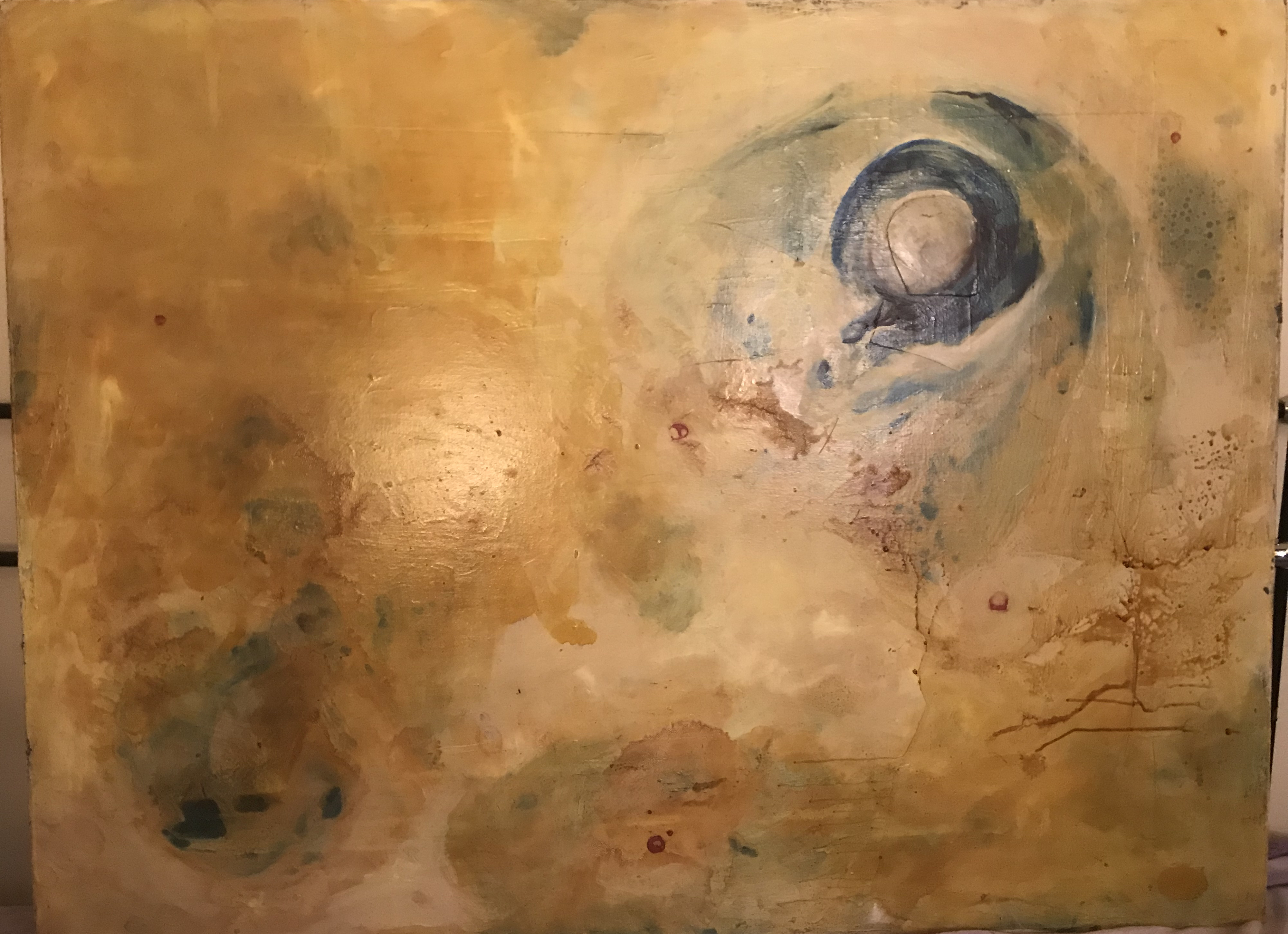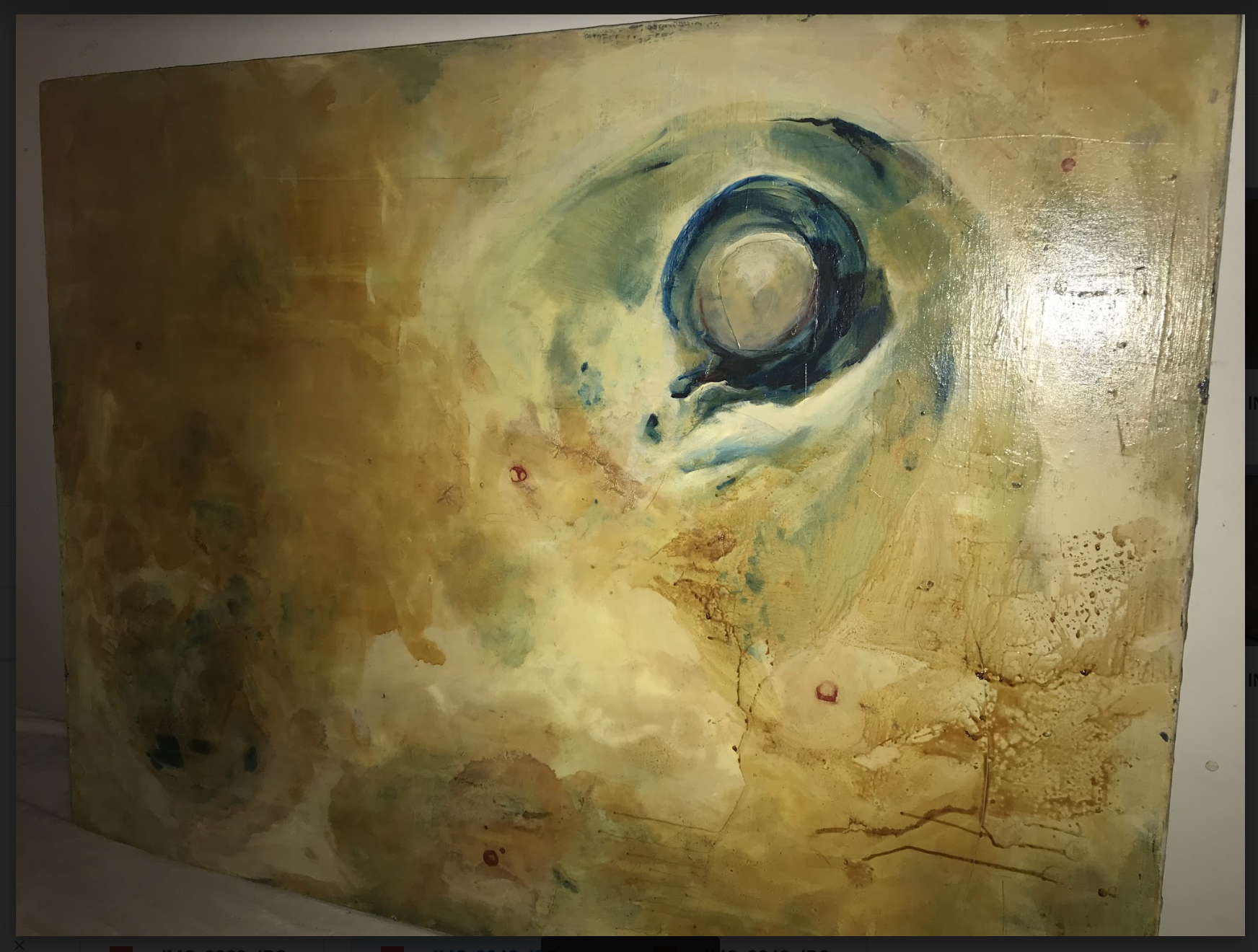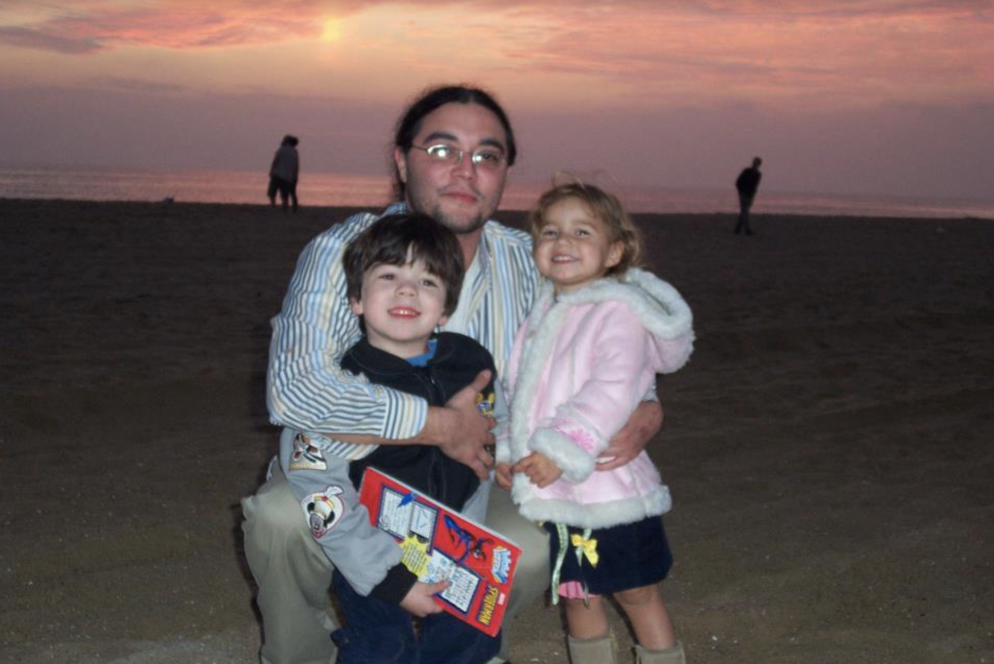Representation of the phenomenology of birth and a man’s rite of passage
Copyright 2002, Jennifer Gunlock. All Rights Reserved.
Birth is a rite of passage, not just for women and their babies, but for their partners and husbands. I was recently intrigued to hear a fascinating story about a man’s rite of passage when he became a new father. Paul Rodriguez, a professor of philosophy living in California, explained to me the profound ways in which the process of birth that he bore witness to when his first child Elijah was born in 2001 transformed him. The birth, which was a home birth and therefore much rarer than a hospital birth, especially during the early 2000s, was ultimately included in a Discovery documentary as part of the channel’s Mysteries Within series.
Of particular interest in the context of the visualization of birth is the way that Paul’s ex-wife Deidra used the above painting by Jennifer Gunlock during the birth 16 years ago. Paul says that she looked at the painting throughout labor and that the work later became deeply meaningful to him, an attachment and memory for him of the physiological and emotional process through which his child emerged into the world.
Gunlock’s painting is abstract, and yet it can be used in the visualization of birth. What I see is a macrocosmic or cosmogonic galaxy within which lies a microcosmic primordial soup or early life. Furthermore, the round forms and golden colors mixed with blues, greens, grays, plus the deep red spatters of paint all have a “feel” of birth to them. It is as if the viewer is witnessing a painting of the feeling of labor, contractions, or birth itself (as opposed to representation of the act of birth). In this, we have representation of the phenomenology of birth, or the experience of birth that the body goes through.
Paul and Deidra knew artist Gunlock and reached out to her about her work and the need for a painting to use during labor and birth. Paul provides more explanation for how the painting was used for visualization:
We told Jen that we wanted something that Deidra could focus on visually in order to help get through certain difficult times during labor. This was not the sort of raw, abstract painting that Jen was accustomed to doing. But I’m glad she obliged our request. Jen has since been shown at several important galleries in southern California.
We had heard that women used several different kinds of objects in this way, like pictures of loved ones, religious items like crosses, or a favorite little treasure or memento, etc. Deidra was not Christian–if anything she was very into earth and nature. The bluefish grey sphere-like thing in the upper right is supposed to be where Deidra was to focus on, amid the blood and various shades of green and yellow and brown that were meant to evoke the raw bodily messiness of labor and birth. The sphere was supposed to bring order to the potential feeling of chaos and fear – or at least something to focus on during the very difficult parts.
Paul also explains his memories of the birthing space in which his son was born, as well as the physical and emotional journey that he and his wife went through during labor and birth. A man’s journey to fatherhood is very different from a woman’s is to becoming a mother, but it is also an important often forgotten path and rite of passage for many men. In his description of his son’s birth story, Paul’s rite of passage is marked by a strong connection to memories of the place where his son was born:
We were in a tiny little garage right next to a freeway in Pomona that had been somewhat poorly converted by the people we rented it from into a single room with a bathroom. It was not ideal, but it was our little home for several months. I remember it had a wonderful fountain behind it with giant goldfish in it. During the labor it was really mostly just Deidra and I in that room. We had a doula and a midwife, and they both stayed out in the courtyard for most of it. That was actually the midwife’s suggestion; she thought it best if the couple had privacy during the birthing as much as possible. So she came in once in a while to check Deidra, and then right toward the time when Elijah was born. Deidra was so courageous and remained focused throughout the entire process that lasted many hours. During that time, I remember holding her up as she had difficulty standing, since in that position it can help the baby get in position for birth. It was physically and emotionally tough for me, and obviously exponentially so for Deidra, of course. I’m so glad I still have the painting. It instantly takes me back to that little room and that most special time of my life.
In recalling the birth stories of our children, sometimes we remember other details that had an impact on us at the time of the rite of passage. Paul explains something that he remembered over the course of my correspondence with him about the birth of his son,
I wanted to add something I’d forgotten for years but remembered just now when taking these pictures of the painting – the more I looked at it, the more faces and eyes I began to see (I mean all those years ago). Jen said she purposefully did that, but tried to make it very subtle and not obvious or apparent on first look – something you’d see after spending time with the painting. Also, because of the quality of the material, which is actually fairly shiny, certain images (like faces) can appear depending on what angle you view it and how the light hits it.
The idea was, as Jen said, that the subtle faces in the painting were supposed to serve as a reminder, in an encouraging sort of way, of the new face we were about to meet.
Included below is a photo of the picture from a different angle for those interested in seeking out the faces that Paul refers to. Paul’s experience is more evidence that artwork, part of the material world, can have an impact on our emotional and psychological connections to the world. And Deidra’s experience also shows that these objects can influence physiological transformation during birth.
Paul Rodriguez is an adjunct professor of philosophy at Chaffey College.
Paul Rodriguez with his children, Elijah and Luna



Absolutely beautiful and powerful! Amazing love of a dad reminds me of God’s great love!